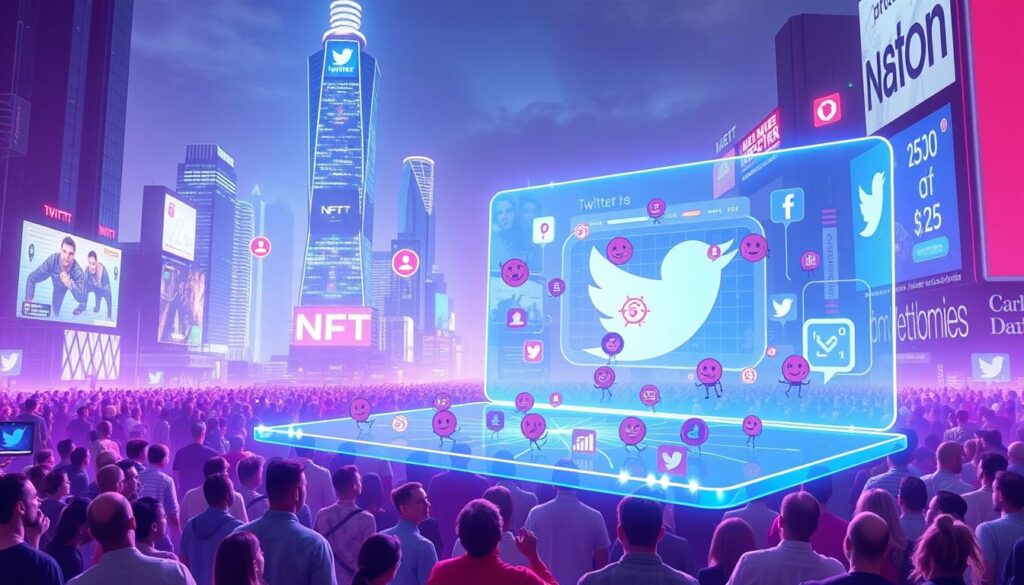Now Reading: Unlocking NFT Fractionalization: Opportunities and Challenges
- 01
Unlocking NFT Fractionalization: Opportunities and Challenges
Unlocking NFT Fractionalization: Opportunities and Challenges

Owning premium digital collectibles has long been out of reach for most investors. Rare items like virtual artwork or gaming assets often carry price tags rivaling luxury real estate. This barrier is dissolving through shared ownership models powered by blockchain technology.
By dividing high-value tokens into smaller portions, investors can now access markets once reserved for elite buyers. This approach combines smart contracts with decentralized networks to ensure transparency. However, it also raises questions about legal frameworks and market stability.
Industries from art galleries to virtual real estate platforms are adopting this method. Game developers use it to let players co-own rare in-game items. Meanwhile, regulators debate how to classify these assets under existing financial laws.
The system offers flexibility but requires careful navigation. Technical risks like smart contract vulnerabilities exist alongside evolving compliance standards. Investors must weigh potential rewards against these complexities.
Key Takeaways
- Shared ownership models make exclusive digital assets accessible to everyday investors
- Blockchain infrastructure ensures secure transactions through automated agreements
- Multiple industries – including gaming and art – are adopting this strategy
- Legal uncertainties and technical risks require thorough due diligence
- Market dynamics shift as liquidity increases for previously illiquid assets
Understanding the Basics of NFT Fractionalization
Blockchain technology is reshaping how we interact with digital property. Imagine owning a slice of rare digital art or iconic virtual collectibles – this is now possible through asset division strategies. Instead of requiring full purchase, these methods let groups collectively invest in premium items through shared stakes.

Defining Digital Assets and Shared Stakes
Non-fungible tokens represent unique digital items, from artwork to virtual real estate. When these assets get divided, they transform into multiple interchangeable tokens using the ERC-20 standard. This process – often managed through automated agreements – locks the original item in a secure digital vault while creating tradable shares.
Essential Terms to Know
Newcomers should understand these core concepts:
- Fractions: Individual units representing partial ownership
- Reconstitution: Merging shares back into the complete asset
- Buyout clauses: Rules for reclaiming full control through predetermined terms
The system mirrors traditional shared investment models but adds blockchain’s transparency. As explained in this guide to fractional NFTs, these tokens can be traded on popular exchanges. This innovation bridges the gap between exclusive digital markets and everyday collectors.
The Evolution of Digital Ownership and Blockchain Assets
Digital collectibles once functioned like rare museum pieces – admired by many but owned by few. This changed as blockchain networks introduced tools to split high-value items into affordable shares. The shift mirrors how traditional markets made luxury assets accessible through shared ownership models.

From Whole Units to Shared Stakes
Early adopters of unique digital items faced steep barriers. A single piece could cost more than a house, limiting participation to elite buyers. Developers recognized this conflict with blockchain’s core mission: open access for all.
New protocols emerged, allowing groups to pool resources for premium assets. These systems convert exclusive items into interchangeable tokens using decentralized ledgers. The approach mirrors stock market principles but operates with cryptographic precision.
Three key changes define this transformation:
- Market expansion: Participation grew from thousands to millions
- Liquidity boost: Previously stagnant assets became tradable
- Use case growth: From collectibles to governance tools
Blockchain’s transparent tracking solves issues plaguing traditional shared ownership. Automated systems handle complex tasks like profit distribution and ownership transfers. As standards evolve, developers continue refining systems for asset management and user rights.
How NFT Fractionalization Works: Mechanics and Smart Contracts
Dividing ownership of premium collectibles becomes seamless through automated blockchain protocols. At its core, this system uses two types of digital certificates: unique identifiers for whole assets and interchangeable units for shared stakes. The mechanics blend cryptographic security with flexible investment structures.

The Role of ERC-20 and ERC-721 Tokens
ERC-721 tokens act as digital deeds for one-of-a-kind items, while ERC-20 tokens represent divisible ownership slices. When a rare digital artwork enters the system, it gets locked in a secure vault contract. The protocol then mints thousands of ERC-20 tokens – each representing a micro-stake in the original piece.
This dual-token approach solves a critical challenge: maintaining the asset’s uniqueness while enabling free market trading. As outlined in recent blockchain research, these standards create interoperable frameworks across platforms. Investors can trade shares on decentralized exchanges without affecting the underlying collectible.
Smart Contract Innovations in Tokenization
Modern agreements include features like automatic profit splits and community governance. If a shareholder wants to reclaim the whole asset, they trigger a timed auction. Other stakeholders then vote to either sell collectively or let the bidder acquire full ownership.
Three innovations stand out:
- Buyback protections preventing hostile takeovers
- Transparent dividend distribution through coded rules
- Multi-signature approvals for major asset decisions
These advancements balance flexibility with investor safeguards. The system allows partial owners to exit positions easily while preserving the asset’s long-term value – a breakthrough in digital ownership models.
Exploring NFT Fractionalization Opportunities for Investors
Investors no longer need vast capital to own a piece of high-value digital treasures. Shared ownership models let diverse participants collectively benefit from premium collectibles. This shift creates dynamic markets where value grows through broader participation.
Benefits of Increased Liquidity
Breaking assets into tradable fractions transforms market dynamics. More units mean more frequent trades, improving price discovery and reducing price gaps. Investors can enter/exit positions quickly, unlike traditional illiquid markets.
Democratizing Access for Smaller Investors
Now anyone can own slices of iconic non-fungible tokens through fractionalized stakes. This approach mirrors stock market accessibility but applies to digital culture. Diversification becomes practical – own 0.1% of ten blue-chip items instead of 100% of one.
The model introduces flexibility unseen in traditional markets. Adjust stake sizes as goals evolve, balancing risk across multiple assets. Communities form around shared ownership, blending financial strategy with cultural engagement.
FAQ
What is fractional ownership in the context of blockchain assets?
Fractional ownership allows multiple individuals to collectively own a portion of a high-value digital asset, such as rare artwork or virtual real estate. This is achieved by dividing the asset into smaller, tradable tokens, enabling broader participation without requiring full purchase.
How do ERC-20 and ERC-721 tokens differ in tokenization?
ERC-721 tokens represent unique, indivisible assets like individual collectibles, while ERC-20 tokens are fungible and interchangeable. Fractionalization often combines both standards, splitting an ERC-721 asset into multiple ERC-20 tokens for easier trading and liquidity.
Can smaller investors benefit from fractionalized digital assets?
Yes. By lowering entry costs, fractionalization democratizes access to premium investments. For example, platforms like OpenSea or Fractional.art let users buy fractions of high-value items, allowing participation with minimal capital while sharing potential returns.
What role do smart contracts play in this process?
Smart contracts automate the division, distribution, and governance of fractionalized assets. They enforce rules like revenue splits or voting rights, ensuring transparency and reducing reliance on intermediaries. Ethereum-based protocols often power these systems.
How does fractionalization improve market liquidity?
By converting illiquid assets into tradable tokens, fractionalization creates active secondary markets. This liquidity lets investors exit positions faster and enables dynamic price discovery, as seen with platforms like Uniswap for token trading.
Are there risks associated with owning fractional tokens?
Yes. Regulatory uncertainty, potential disputes among co-owners, and smart contract vulnerabilities are key concerns. Platforms like NIFTEX implement governance models to mitigate risks, but thorough due diligence remains essential for investors.













pocket wifi
I love what you guys tend to be up too. This sort of clever work and coverage!
Keep up the great works guys I’ve incorporated you guys to blogroll.